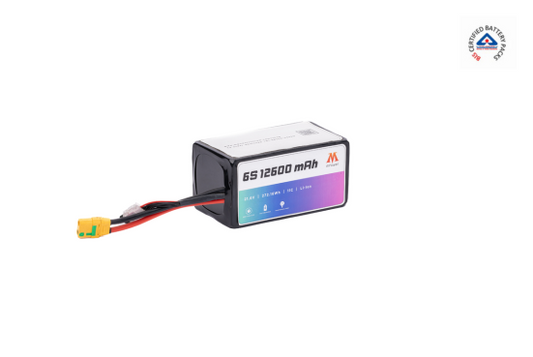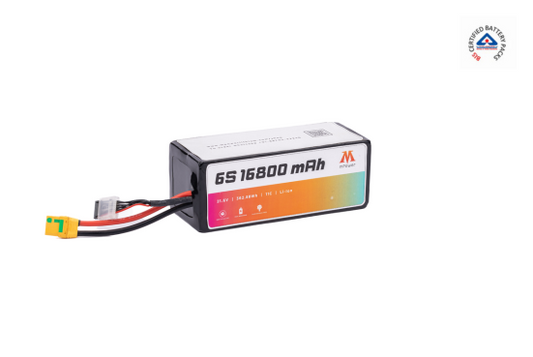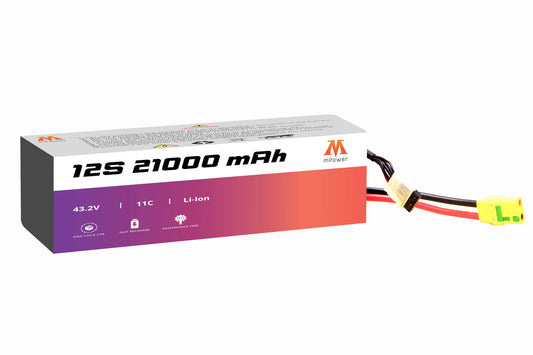In the ever-evolving world of drone technology, the advancements in battery innovations play a crucial role in shaping the capabilities of these aerial devices. Among the various types of batteries available, li ion battery for drone are widely used due to their high energy density, lightweight, and longer lifespan. Within the realm of lithium batteries, two popular variants are the Capacity Lithium Battery and the Power One. Both have unique features and applications, catering to the different needs of drone enthusiasts and professionals.
In this blog, we will explore five key differences between these two types of batteries - the Capacity Lithium Battery and the Power One - to help you make a good decision for your drone.
Exploring Capacity Lithium & Power One Batteries
Embarking on a journey into drone technology, two prominent players take center stage - Capacity Lithium Batteries and Power One Batteries. These cutting-edge lithium-ion powerhouses cater to diverse drone applications with distinct characteristics.
Capacity Lithium Batteries boast higher energy density, providing longer flight times, making them perfect for surveillance, curvy, mapping, aerial photography and videography. Power One Batteries prioritize agility and high discharge rates on the other wing, ideal for agricultural spraying drones. The former excels in temperature tolerance and gradual energy release, while the latter ensures quick turnaround times.
Whichever battery you choose, your drone adventures will be elevated with superior performance and efficiency, driven by the power of lithium innovation.
5 Differences between Capacity Lithium & Power One Batteries
This blog section will explore some of the major differences between capacity lithium and power one batteries.
- Energy Density and Flight Time
The first and most significant difference between the Capacity Lithium Battery and the Power One lies in their energy density. Capacity Lithium Batteries are designed to have a higher capacity, meaning they can store more energy within a given volume or weight. As a result, they offer longer flight times for drones, which is a crucial aspect for various professionals who require extended flight durations for their tasks.
On the other hand, the Power One batteries are optimized for high discharge rates, making them suitable for agricultural drones that require bursts of power and agility. While the Power One may have a shorter flight time compared to the Capacity Lithium Battery, it is ideal for agricultural drone operations.
- Weight and Portability
When it comes to drone applications, weight plays a vital role in determining flight performance and maneuverability. Capacity lithium batteries are lighter in weight ideal for surveillance, survey and mapping operations. In contrast, the Powerone batteries are heavier due to less energy density.
- Charging and Discharging Rates
Charging and discharging rates are essential factors affecting battery efficiency and lifespan. Capacity Lithium Batteries are typically designed for slower charging and discharging rates, ensuring a more gradual release and intake of energy. This characteristic makes them ideal for longer flights and extends their overall lifespan.
On the other hand, the Power One batteries are built for faster charge and discharge cycles, when compared to Capacity Lithium batteries.
- Temperature Tolerance
Operating drones in extreme weather conditions is often a requirement for various applications. In this regard, Capacity Lithium Batteries have an advantage, as they generally exhibit better temperature tolerance than Power One batteries. Lower temperatures can significantly affect battery performance, and Capacity Lithium Batteries tend to handle such situations more effectively. If you frequently fly your drone in colder climates, the Capacity Lithium Battery might be the safer option.
- Price and Cost-effectiveness
Price is an important factor for many drone enthusiasts and professionals, especially considering the frequency of battery replacement in heavy-use scenarios. With their larger capacity and longer lifespan, Capacity Lithium Batteries often have a higher price tag than Power One batteries. However, their cost-effectiveness should be assessed based on individual usage requirements. If you need longer flight times and can afford a higher upfront investment, the Capacity Lithium Battery may prove more cost-effective in the long run.
Why Choose mPower?
mPower has established itself as a leader in advanced materials, making it a top choice for lithium battery for drones. We have 10,000 SF State-of-the-art manufacturing plants with world-class machinery. Several key factors contribute to mPower Materials' superiority in lithium battery for drone production are:
- Our innovative technology enhances the battery's conductivity, leading to faster charging and higher energy densities.
- mPower 's materials exhibit exceptional thermal stability, ensuring safety and longevity for lithium-ion batteries.
- Our lightweight products improve overall battery performance and energy efficiency.
- mPower 's commitment to sustainability and eco-friendly practices makes us a preferred partner for environmentally conscious industries.
Wrapping Up
In conclusion, both Capacity Lithium Batteries and Power One batteries have their strengths and weaknesses, catering to different applications and user preferences. If you prioritize longer flight times, higher energy density, and temperature tolerance, the Capacity Lithium Battery is the way to go.
On the other hand, if agility, quick acceleration, and faster charging are crucial for your drone operations, the Power One battery may be the better fit. Ultimately, understanding your specific drone usage and needs will guide you to choose between these two li ion batteries for drone variants, ensuring optimal performance and efficiency for your drone adventures.












